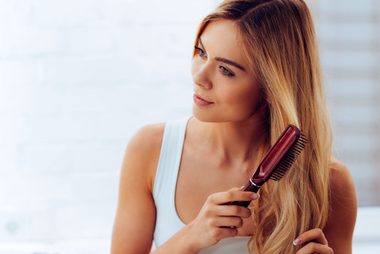
The golden rule for brushing
You’re not raking fall leaves; be gentle. “Even if you use the best brush, vigorous brushing can remove layers of your hair’s protective outer cuticle—and this can weaken strands and make them more vulnerable to damage from other things, such as daily styling, UV rays, and color processing,” says Anabel Kingsley, trichologist at Philip Kingsley.
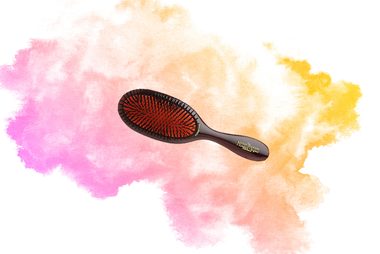
The best brush for thin, delicate, or damaged hair
The wrong type of brush can cause a great deal of damage to your hair, so it’s important to choose carefully. “For many women who come into our New York Clinic with hair breakage and a sore scalp, their brush is an exacerbating factor,” explains Kingsley. Struggling with thinning strands? Mason Pearson makes a Sensitive Bristle Brush specifically designed for thinning or ultra-fine locks. Not only is this brush super gentle, but it stimulates the scalp to promote hair growth. Another top pick: The Spornette #342 De Ville Cushion Brush is ideal if hair loss or excessive shedding is an issue.
Also, don’t forget to checkout how to clean a hairbrush.
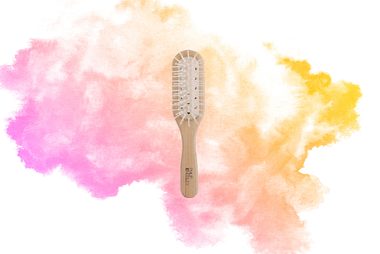
The best brush for fine, short hair
If you have fine, short hair (no longer than a bob), use a vent style brush with a smaller surface area and wide bristles, Kingsley advises. Top picks: the Philip Kingsley Vented Grooming Brush and Goody Detangle It Vent Hair Brush. Considering a cropped cut? Read up on the eight things that can happen when you cut your hair short.
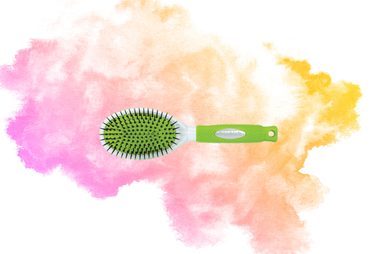
The best brush for fine, medium-to-long hair
When it comes to brushing baby fine strands, look for soft natural bristles with ball-tipped pins, set in a rubber cushion, which makes it more flexible. (Translation: The brush is gentler on strands and scalp.) For this, the BrushLab Fresh Oval Cushion Hair Brush is a great choice. “With fine hair, you have to work fast and not overwork it. If you overheat or overwork, it will actually fall limp,” says Julien Farel, founder of Julien Farel Restore Salon & Spa. If you are planning to heat style, Farel suggests sticking with a metal-based round brush, because it creates more heat and will dry the hair more quickly (the less time heat styling fine hair, the better).
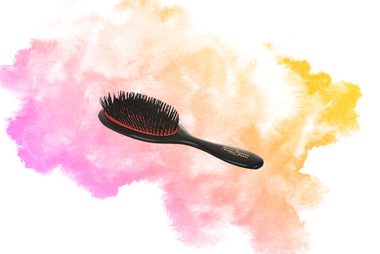
The best brush for fine-to-normal hair
A pure boar bristle brush is considered the crème de la crème for dry styling fine-to-normal tresses. They distribute the scalp’s natural oils, lift away impurities, and give your hair an old-fashioned grooming that basically guarantees a good hair day. Pros love the Mason Pearson Handy Bristle Hair Brush. “They are pricey but worth every penny,” says Lauren Thompson, stylist at Nunzio Saviano Salon. For a more affordable option, try the Denman Medium Boar Bristle Brush.
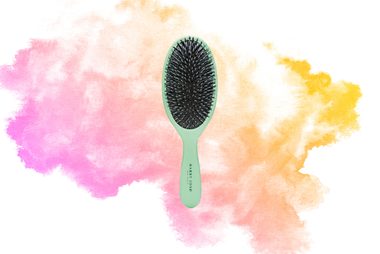
The best brush for normal-to-thick or long hair
If you have normal-to-thick hair, Kingsley suggests a brush with a larger surface area for ease of styling. A mix of nylon and boar bristles is a versatile choice for everyday styling. Nylon quills help detangle, while boar bristles work their magic, distributing natural oils and smoothing strands. Pros love the Harry Josh Pro Tools Premium Oval Brush and the ultra-affordable Sonia Kashuk Hair Brush. If you have normal-to-thick hair that tends to be on the straighter side (or you want to style it that way), opt for a paddle brush with nylon pins. Thompson loves the Paul Mitchell 427 Paddle Brush. Other top picks: the Philip Kingsley Vented Paddle Brush and T3 Paddle Brush.
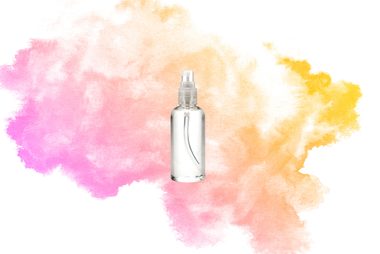
The best brush for thick, coarse hair
To tame a thick, coarse mane, you need to pull out the big guns. Opt for a vented brush with wide-spaced nylon bristles—and use it when hair is still damp. Pro tip: If you’re embracing your natural texture or going for beachy waves, steer clear of paddle brushes, which can flatten strands.
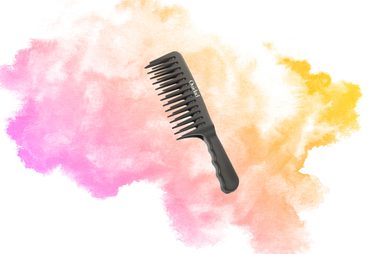
The best brush for curly hair
A curly coif can be a challenge unless you have the right tools. Your best bet? It depends who you ask. Some stylists recommend a comb with wide-spaced teeth, like the Ouidad Double Detangler Comb or Julien Farel Restore Comb. While others swear it’s a brush with widely spaced, thick wooden (or bamboo) quills, like the Kent Woodyhog Brush or Body Shop Bamboo Pin Hairbrush. Here’s why: Natural wooden bristles evenly distribute natural oils, are gentle (read: won’t snag snarls or separate curls) and don’t generate dreaded static or frizz.
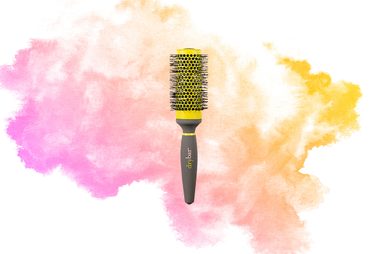
The best brush for smoothing
A round brush is the ultimate smoother and blow-dry helper—as an added bonus, it also creates natural-looking volume. Alli Webb, Drybar founder, suggests a ceramic model, like the Drybar Full Pint Medium Round Brush, to help lay down and seal the cuticle, which helps fight frizz. “The label.m Hot Brushes (which come in five sizes) are fantastic,” says Raquel Negrete, label.m senior educator and owner of Pomp Salon in Stockton, California. “Because they have a combination of boar and ionic nylon bristles, they can do wonders on all hair types. They also have a ceramic core that heats up, helping to smooth out frizz and create volume.” Wondering how to choose the right size barrel? “The longer your hair, the larger the brush you should be using,” Negrete says.
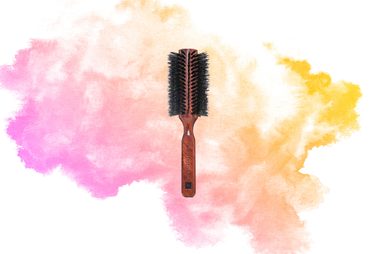
The best brush for creating volume
If mega movement and body is your goal, Farel recommends blow drying strands with a large round boar bristle brush, like the Julien Farel Large Boar Bristle Brush. He also suggests using rollers to lock in the heat after the blow dry. Want to take your tresses up a notch? Try a teasing brush. Look for one with boar bristles, like the Wigo Color Teasing 100% Boar Bristle Brush or Sephora Collection Bump Boar Teaser, which will deliver maximum volume sans breakage.
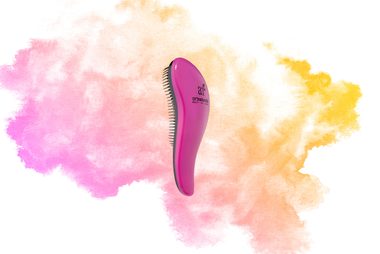
The best brush for detangling
Say buh-bye to snarls with firm plastic bristles. Try the artnaturals Detangling Hair Brush Set, the Tangle Teezer The Original Detangling Hairbrush, or the Crave Naturals Glide Thru Detangling Brush. To detangle, start at your ends and gradually work your way up; otherwise, if you start at the top, you can worsen knots and break strands. Also, there’s no need to brush more than you have to. “Contrary to popular myth, 100 strokes a day doesn’t make the hair shiny, it simply weakens it,” says Kingsley. “Imagine what would happen to a sweater if you brushed it repeatedly; it would become frayed. The same applies to your strands.” You can also help prevent breakage by spritzing on a detangler (such as Living Proof Restore Perfecting Spray) when strands are snarled.
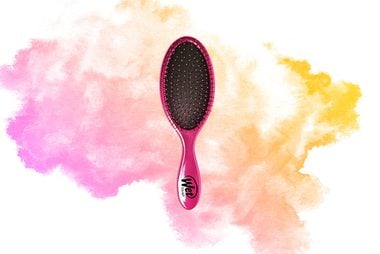
The best brush for wet-brushing
Wet hair is weaker and more fragile than dry hair, so the right hair brush is essential. The ultimate post-shower strand-saver: The Wet Brush Original Detangler. “The bristles are thin and flexible, so they won’t snag or rip through the hair,” says Thompson. You can also use a wide-tooth comb, if you prefer. Negrete recommends the label.m Carbon Anti-Static Detangling Comb. “The spaced-out teeth make it easier to run through wet hair while still being gentle on delicate hair.” And as always, be sure work up from the ends to roots to prevent breakage.
